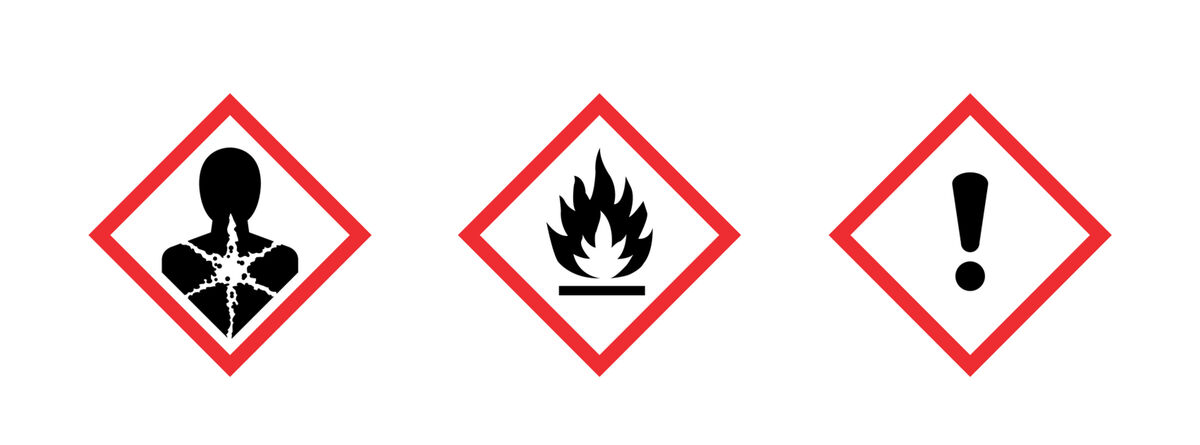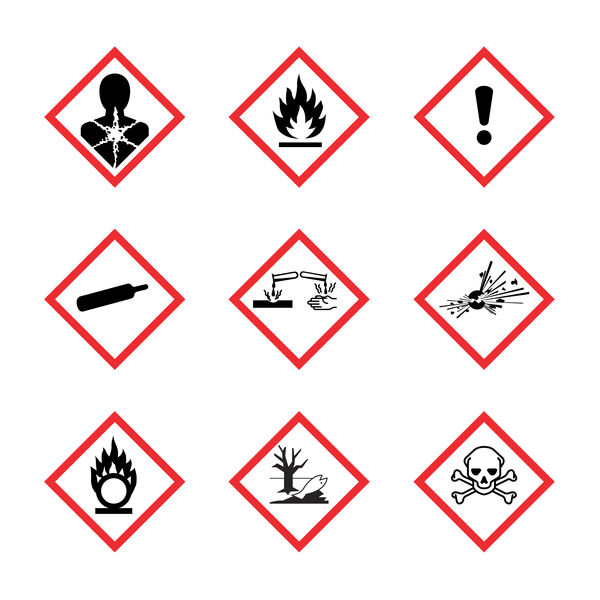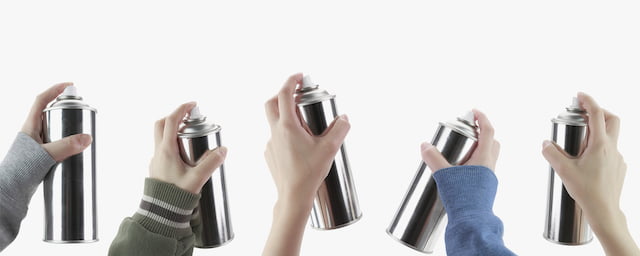Hazardous substance labelling of technical chemical products and the challenge in practice

The hazard labelling of technical chemical products is a topic that is of great importance to every company. What the individual hazard labels according to the GHS (Globally Harmonised System) mean will not be described here - anyone interested can easily read about this in the relevant sources. Here we focus on the practical application of the Hazardous Substances Ordinance (GefStoffV)!
In principle, every company must have an occupational safety officer who advises and supports the employer in the entire field of occupational safety - or more precisely: “occupational safety and health protection, and structuring safe and healthy working conditions". For example, he or she instructs and trains employees on how to handle hazardous substances properly and draws up work instructions for this purpose in every case.
On the compulsory labelling of technical chemical products
Each product is described and classified in a safety data sheet. Important for labelling is the overall assessment, which is documented in the safety data sheet and on which the labelling according to GHS depends. Of course, the aim of the Hazardous Substances Ordinance is to protect humans as well as the environment from harmful, substance-related effects.
In detail it focuses on:
How are technical chemical products labelled according to the GHS?
It is therefore quite possible that certain ingredients in the product in question are classified as far more hazardous than the labelling indicates. This phenomenon becomes visible in the corresponding so-called “hazard statements”. However, as long as these ingredients are below a certain percentage, this is usually unproblematic and is not reflected in the labelling of hazardous goods according to the GHS. Furthermore, when handling these substances the work instructions, which as already mentioned above are available in every company, are the basis for users.
Preference for safer products!
§ 7 Para. 3 of the Hazardous Substances Ordinance states: (3) On the basis of the result of the substitution test in accordance with § 6 Para. 1 Sentence 2 No. 4, employers must carry out possible substitutions as a matter of priority. They must replace hazardous substances or processes with substances, compounds, products or processes that are not hazardous or are less hazardous to the health and safety of workers under the respective conditions of use.
In addition to the work instructions, many companies therefore already have a corresponding directive for the purchase or use of technical chemical products. According to this regulation, the product that is classified as less hazardous according to the GHS must be used - assuming it offers the same effectiveness. In practice, this means that a product which, for example, is only labelled with a flame symbol (slightly/highly flammable) must be given preference over a product which, in addition to the flame symbol, also has to bear the "!" exclamation mark (for hazardous to health).
The occupational safety officer (occupational safety specialist)
In principle, every company must have an occupational safety officer who advises and supports the employer in the entire field of occupational safety - or more precisely: “occupational safety and health protection, and structuring safe and healthy working conditions". For example, he or she instructs and trains employees on how to handle hazardous substances properly and draws up work instructions for this purpose in every case.
On the compulsory labelling of technical chemical products
Each product is described and classified in a safety data sheet. Important for labelling is the overall assessment, which is documented in the safety data sheet and on which the labelling according to GHS depends. Of course, the aim of the Hazardous Substances Ordinance is to protect humans as well as the environment from harmful, substance-related effects.
In detail it focuses on:
• occupational health and safety (employees)
• environmental protection
• consumer protection
How are technical chemical products labelled according to the GHS?
In this context it is important for the classification of a product as a hazardous substance, and thus the necessary labelling in accordance with GHS, TO BE CLEARLY STATED IN SECTION 2 OF THE SAFETY DATA SHEETS. The corresponding labelling then also results from this classification.
It is therefore quite possible that certain ingredients in the product in question are classified as far more hazardous than the labelling indicates. This phenomenon becomes visible in the corresponding so-called “hazard statements”. However, as long as these ingredients are below a certain percentage, this is usually unproblematic and is not reflected in the labelling of hazardous goods according to the GHS. Furthermore, when handling these substances the work instructions, which as already mentioned above are available in every company, are the basis for users.
Preference for safer products!
§ 7 Para. 3 of the Hazardous Substances Ordinance states: (3) On the basis of the result of the substitution test in accordance with § 6 Para. 1 Sentence 2 No. 4, employers must carry out possible substitutions as a matter of priority. They must replace hazardous substances or processes with substances, compounds, products or processes that are not hazardous or are less hazardous to the health and safety of workers under the respective conditions of use.
In addition to the work instructions, many companies therefore already have a corresponding directive for the purchase or use of technical chemical products. According to this regulation, the product that is classified as less hazardous according to the GHS must be used - assuming it offers the same effectiveness. In practice, this means that a product which, for example, is only labelled with a flame symbol (slightly/highly flammable) must be given preference over a product which, in addition to the flame symbol, also has to bear the "!" exclamation mark (for hazardous to health).

An intelligent solution - for practical application, from practical experience!
The answer for all three main interests of occupational safety, environmental protection, consumer protection is provided, for example, by the product innovations featured in the newly developed innotech tricomplex-Technology®.
The product solutions contain all the necessary ingredients that maintenance workers (users) need for efficient use.
The necessary protection of people and the environment from harmful, substance-related effects is also guaranteed. This shows that ONLY the flame mark and NO other identification is required for these products.
An example of such a product is the innotech High Performance Maintenance Oil "HLW 100”, which is described here. For more information on the technology, please visit here.
Why not get in touch with us? We look forward to hearing from you!
The answer for all three main interests of occupational safety, environmental protection, consumer protection is provided, for example, by the product innovations featured in the newly developed innotech tricomplex-Technology®.
The product solutions contain all the necessary ingredients that maintenance workers (users) need for efficient use.
The necessary protection of people and the environment from harmful, substance-related effects is also guaranteed. This shows that ONLY the flame mark and NO other identification is required for these products.
An example of such a product is the innotech High Performance Maintenance Oil "HLW 100”, which is described here. For more information on the technology, please visit here.
Why not get in touch with us? We look forward to hearing from you!







